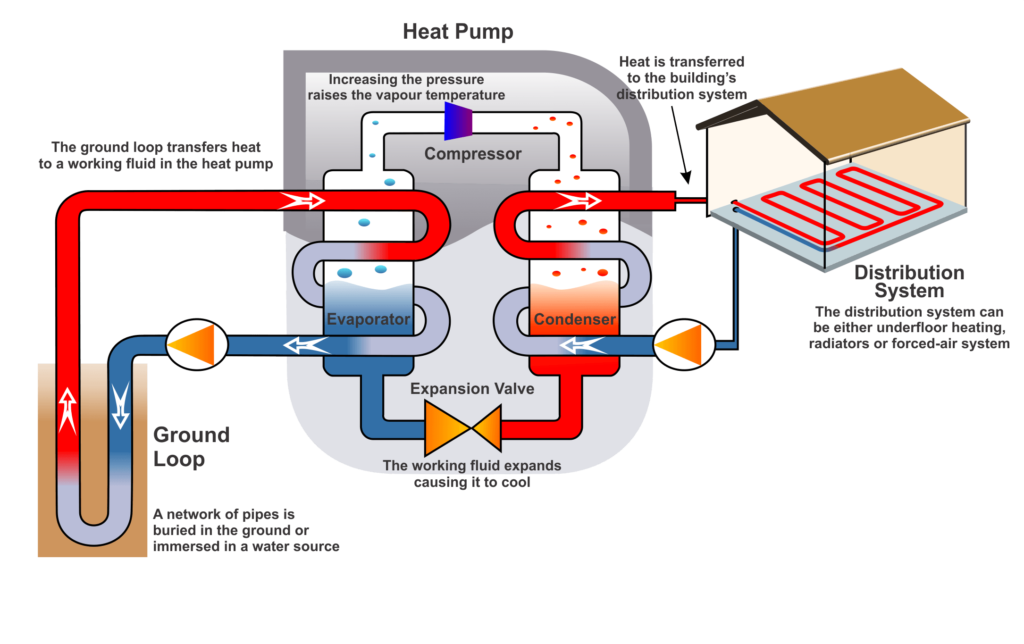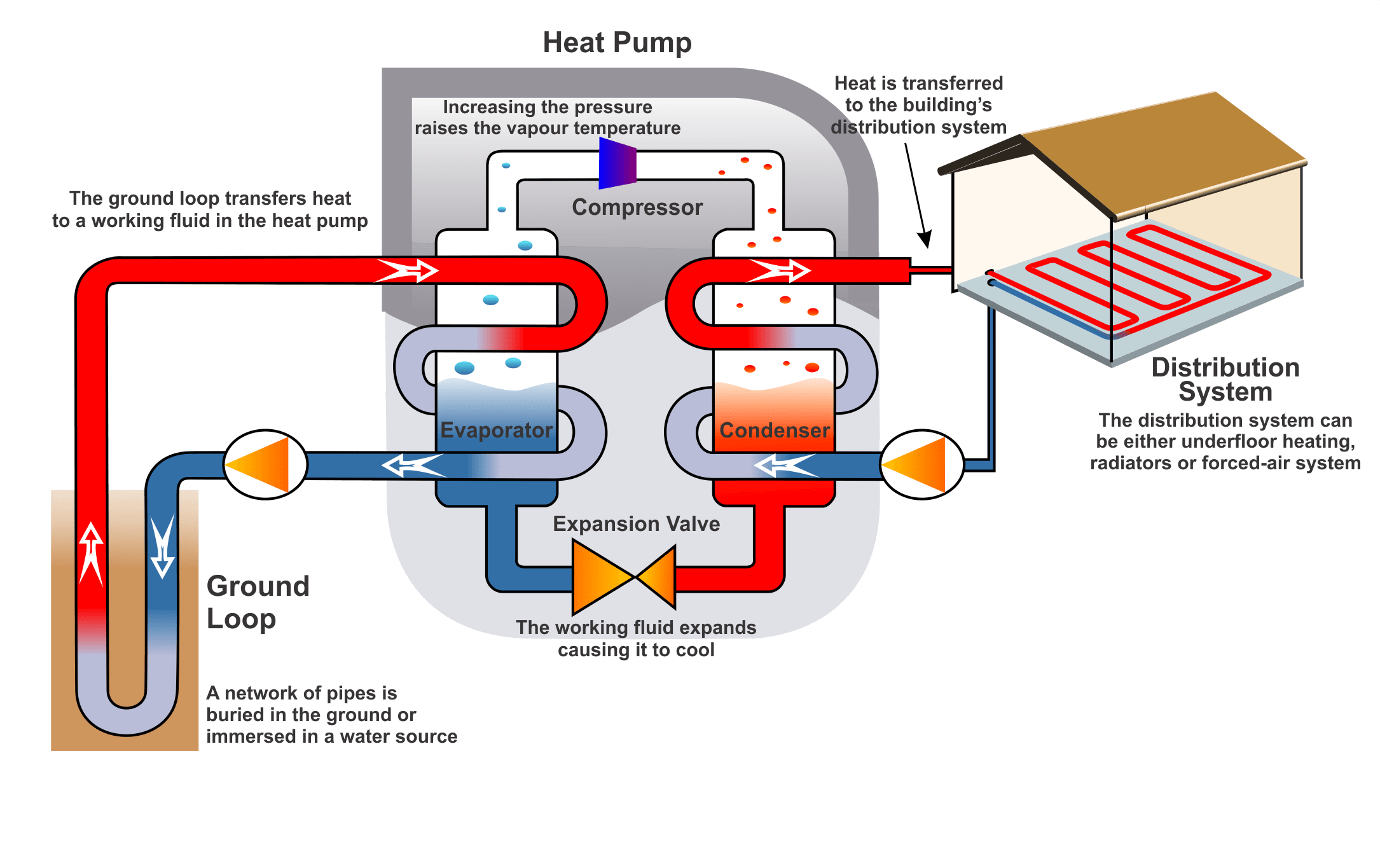
Implementing replacements of CFCs and HCFCs could help UN signatories to uphold international agreements on carbon emissions.
The 1987 Montreal Protocol and the 1997 Kyoto Protocol called for countries around the world to phase out substances like CFCs (chlorofluorocarbons), HCFCs (hydrochlorofluorocarbons), and HFCs (hydrofluorocarbons) that deplete the ozone layer and cause global warming. Many heating, ventilation and air conditioning systems still use these synthetic refrigerants that violate those international agreements and inflict environmental damage.
Recently, a team of Iranian researchers investigated how natural refrigerants could replace CFCs, HCFCs and HFCs in geothermal heat pumps to reduce energy consumption and operating costs. They report their findings in the Journal of Renewable and Sustainable Energy, from AIP Publishing.
The researchers also examined the environmental and economic benefits of zeotropic and azeotropic refrigerants, as well as natural refrigerants. Based on their modeling, the researchers determined that natural materials, including ammonia and n-butane, are the most economical and environmentally friendly replacement refrigerants for geothermal heat pumps.
Geothermal heat pumps exploit how the earth’s temperature below the surface stabilizes in mid-50s-degree Fahrenheit by using a vapor compression cycle equipped with buried pipes in horizontal trenches or vertical boreholes. Geothermal heat pumps extract heat from the ground (in the winter) and dissipate heat to the ground (in the summer) by circulating fluid such as water through buried pipes. This design takes advantage of the moderate temperatures in the ground to boost efficiency and reduce the operational costs of heating and cooling systems.
In their review, the researchers ran an Hour Analysis Program to calculate the heating and cooling loads in a 14-story, residential building. Then, they applied their findings to an Engineering Equation Solver to model the thermodynamic cycle of an open and closed loop ground source heat pump with different known refrigerants.
“The big challenge for the coming years in the HVAC and refrigeration industry is to establish natural refrigerant technology to substitute CFCs, HCFCs and HFCs refrigerants,” said Mostafa Mafi, one of the authors on the paper. “A solution to reduce energy consumption in heat pumps is using the earth as a renewable heat source/sink to both increase efficiency and create a diversity of energy sources.”
Learn more: Demonstrated Natural Refrigerant Replacements Could Reduce Energy Costs and Conserve the Environment
The Latest on: Natural refrigerants
[google_news title=”” keyword=”natural refrigerants” num_posts=”10″ blurb_length=”0″ show_thumb=”left”]
via Google News
The Latest on: Natural refrigerants
- Ideal Heating launches new air source heat pump serieson May 1, 2024 at 10:39 pm
The UK-based manufacturer said the new Ecomod 290HT products have a size ranging from 15 kW to 50 kW and a coefficent of performance of up to 4.9. The systems can reportedly achieve a flow temperature ...
- TOROMONT ANNOUNCES RESULTS FOR THE FIRST QUARTER OF 2024 AND QUARTERLY DIVIDENDon May 1, 2024 at 2:04 pm
CNW/ - Toromont Industries Ltd. (TSX: TIH) today reported its financial results for the first quarter ended March 31, 2024. Three months ended March 31 ...
- How Sewage Is Helping Along the Energy Transitionon May 1, 2024 at 4:00 am
Cities, utilities and buildings are increasingly turning to some unlikely renewables to reduce fossil fuel emissions.
- Rapidly rising levels of TFA ‘forever chemical’ alarm expertson April 30, 2024 at 8:33 pm
Trifluoroacetic acid found in drinking water and rain is thought to damage fertility and child development ...
- Vitesco and Sanden join on BEV thermal managementon April 29, 2024 at 8:49 am
Sanden - known for its auto a/c compressors - is developing a compact refrigeration unit using the natural refrigerant propane (R290) while Vitesco Technologies is working on the heat energy ...
- State Archives April 2024on April 26, 2024 at 5:00 pm
5-year-old saved after nearly drowning at Upstate NY waterpark ...
- News Archives April 2024on April 23, 2024 at 5:00 pm
Company news: Ryan Grace promoted by Bell & Spina Architects-Planners On National Historic Marker Day, meet the CNY man whose plaques celebrate history in 49 states Recapping President Biden’s visit ...
- Milk Cooling Tank Compatible With Revised F-Gas Regulation Introduced By Wedholmson April 23, 2024 at 12:01 pm
The first milk cooling tank in the European market to use CO2 as refrigerant in standard cooling systems of the direct expansion cooling type has been introduced by Wedholms. The tank is compatible ...
- Insight: Texas Gas Service discusses importance of safe diggingon April 19, 2024 at 2:00 pm
As the month of April highlights Safe Digging Month, the Texas Gas Service wants to remind everyone of Texas 811-- a free service that can help people dig safely.
via Bing News











